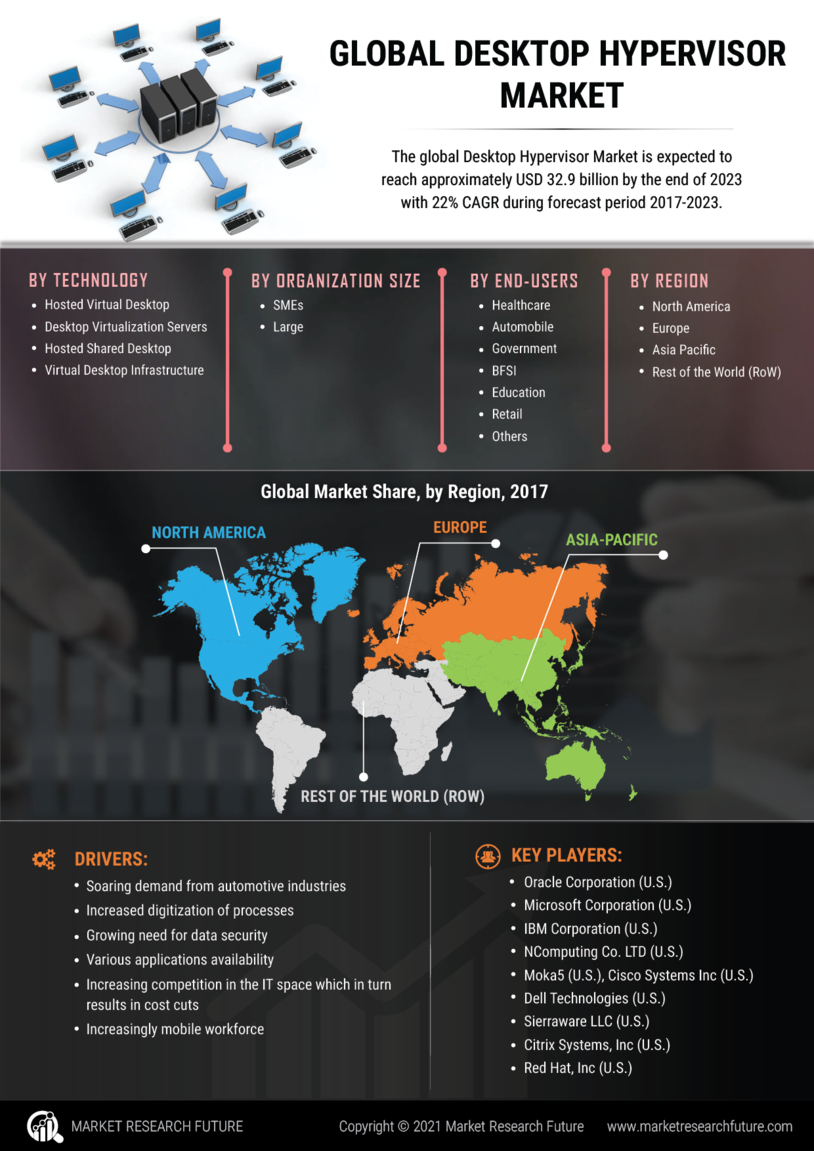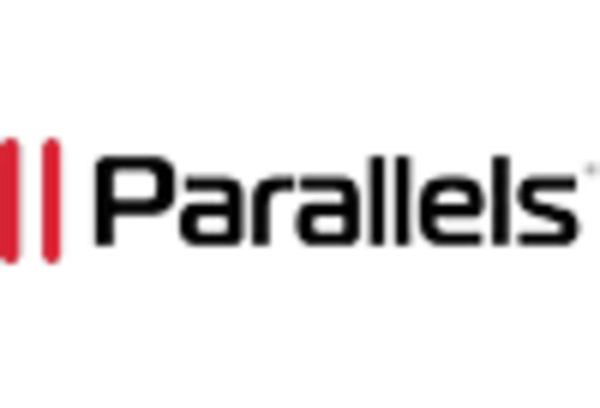Integration with Emerging Technologies
The Desktop Hypervisor Market is witnessing a trend towards integration with emerging technologies such as artificial intelligence and machine learning. These technologies are increasingly being incorporated into virtualization solutions to enhance performance and automate management tasks. For instance, AI-driven analytics can optimize resource allocation and improve system performance, making desktop hypervisors more efficient. Market forecasts suggest that the integration of AI with virtualization technologies could lead to a 25% increase in operational efficiency for organizations. As businesses strive to leverage the benefits of these advanced technologies, the demand for desktop hypervisors that can seamlessly integrate with AI and machine learning solutions is likely to grow. This trend not only enhances the functionality of desktop hypervisors but also positions them as pivotal tools in the digital transformation journey of organizations.
Advancements in Virtualization Technology
The Desktop Hypervisor Market is being propelled forward by continuous advancements in virtualization technology. Innovations such as improved hypervisor performance, enhanced resource management, and better integration with existing IT systems are making desktop hypervisors more appealing to organizations. Recent developments indicate that the efficiency of hypervisors has improved, allowing for faster boot times and reduced latency. This technological evolution not only enhances user experience but also supports the deployment of more complex applications within virtual environments. As businesses increasingly rely on sophisticated software solutions, the demand for advanced desktop hypervisors is expected to rise, further driving market growth. The ability to seamlessly integrate with various operating systems and applications positions desktop hypervisors as essential tools in modern IT infrastructure.
Growing Adoption of Remote Work Solutions
The Desktop Hypervisor Market is experiencing a notable surge in demand due to the increasing adoption of remote work solutions. Organizations are increasingly recognizing the need for virtualization technologies that enable employees to access their work environments from various locations. This trend is supported by data indicating that the remote work sector has expanded significantly, with a projected growth rate of approximately 15% annually. As businesses seek to enhance productivity and flexibility, desktop hypervisors provide a viable solution by allowing multiple operating systems to run concurrently on a single machine. This capability not only optimizes resource utilization but also simplifies IT management, making it an attractive option for companies aiming to streamline operations in the evolving work landscape.
Increased Focus on Data Security and Compliance
In the Desktop Hypervisor Market, the heightened focus on data security and compliance is a significant driver. Organizations are becoming more aware of the risks associated with data breaches and are seeking solutions that offer robust security features. Desktop hypervisors provide a secure environment for running applications, as they can isolate virtual machines from one another, thereby minimizing the risk of unauthorized access. Furthermore, regulatory compliance requirements are pushing businesses to adopt virtualization technologies that can help them meet stringent data protection standards. Market analysis indicates that companies investing in secure virtualization solutions are likely to experience a reduction in security incidents by up to 40%. This emphasis on security not only enhances the appeal of desktop hypervisors but also positions them as critical components in the overall IT security strategy.
Rising Need for Cost-Effective IT Infrastructure
In the Desktop Hypervisor Market, the demand for cost-effective IT infrastructure is a driving force. Organizations are increasingly looking for ways to reduce operational costs while maintaining high performance. Desktop hypervisors facilitate this by enabling the consolidation of hardware resources, which can lead to significant savings in both hardware and energy expenditures. Market data suggests that companies utilizing virtualization technologies can reduce their hardware costs by up to 30%. This financial incentive, coupled with the ability to deploy multiple virtual machines on a single physical server, positions desktop hypervisors as a strategic investment for businesses aiming to optimize their IT budgets. As a result, the market is likely to witness sustained growth as more organizations recognize the financial benefits of adopting virtualization solutions.


















Leave a Comment